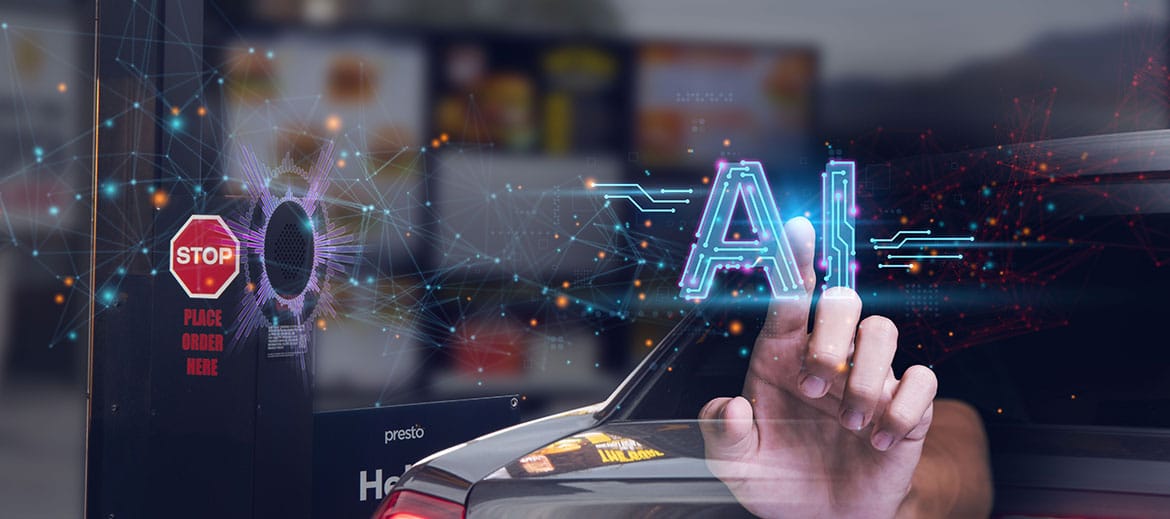Absorbing the 25 percent wage increase to $20 per hour for California fast-food QSRs (Quick-Service Restaurants) with more than 60 locations has been an emotional rollercoaster. When the Fast Act died and was revived as AB 1228, which went into effect on April 1, 2024, it impacted 500,000 fast-food workers and formed the nine-member Fast Food Council who has the power to max out annual hourly wage increases by an additional 3.5 percent. How will restaurant operators ride this new law’s velocity while managing margins?
Unless you’re (mostly) exempt with nontraditional locations like grocery stores, airports, hotels, large event centers, museums, or corporate campus dining, or you produce fresh-baked bread on-site, you’re likely sitting on sharp decisions. From menu pricing and staff layoffs, to increasing check size, optimizing operations and efficiencies, and solving scheduling puzzles, QSRs are grappling with balancing value perception and slim margins alongside creating exceptional customer experiences.
And California operators aren’t alone in their struggle. An INC article showed hourly fast-food pay increases up to $16.28 from Hawaii to Maryland and New York City to Washington. With Minnesota creating a similar council, the Minneapolis Labor Standards Board, for increasing wages and improving working conditions for fast-food workers.
Fast-Food Law Escalates Tech Transformation
Putting fast-food restaurants further into a pickle are 2024 California consumer stats shared in Nation’s Restaurant News showing 66 percent are pulling back on dining due to high prices, 50 percent believe the new law will cause more layoffs, and 52 percent are considering dining out less frequently if restaurants increase prices due to higher minimum wage. Leaving limited-service, immediate-consumption QSRs few options, drive-thru brands like Wendy’s, McDonald’s, Taco Bell, Chipotle, In-N-Out Burger, and Burger King are slowly rolling out changes pre- and post-fast-food law.
Chipotle started with 3 percent pricing increases in October 2024, as did Taco Bell, and hit 7 percent to 8 percent in April 2024, like Wendy’s. Chipotle also noted annual labor costs would likely increase by $74 million. For McDonald’s franchisees, their AB 1228 data showed each location will likely add $250,000 to annual expenses.
TheNew York Post found Burger King’s Texas Double Whopper Meal tallied $1.80 more and their Big Fish Meal increased to $11.49 due to the law. And In-N-Out Burger changed the price of their burgers by $0.25 and $0.05 for soda.
Beyond pricing booms, Shake Shack, with 13 percent of their locations in California, is experimenting with large self-serve kiosks, additional drive-thru operations, and altering their labor model in anticipation of “significant increase to labor costs.”
Even Fast Food Council member, Michaela Mendelsohn, who spoke with CNN and owns 6 El Pollo Loco restaurants, says she increased menu prices up to 4 percent since February 2024 in order to prep for higher wages. She’s also implementing self-serve kiosks as well as considering adding drive-thru AI (Artificial Intelligence) in the coming year.
As the new California fast-food law has shaken out over the month of April, layoffs and hiring freezes have cascaded over restaurants in addition to third-party delivery options, cost-conscious promos, shortened operating hours, and a higher incorporation of AI.
QSRs Stay Adaptable With Modern Automation
Verging toward breaking points with menu price increases and worker headcount cuts, to meet quality and value standards expected by today’s experiential consumer, the answer floating around is incorporating modern technology like self-serve kiosks, automated cooking systems, and AI for drive-thrus. Each tech advance helps QSRs stay adaptable to change while continuing to run high-performing restaurants that excel as efficiently as possible.
Chipotle may have raised menu prices on the high end, but the brand also invested in kitchen automation equipment, like the Autocado and Hyphen makeline, to reduce costs. McDonald’s, the largest US QSR brand, had a franchisee tell CNN they’re relying more on technology than ever before not to replace the importance of humans who smile at fast-food customers in the drive-thru, but to reallocate their work for the biggest impact, like building Happy Meals.
It’s those restaurants who embrace technology, software, automation, and AI efficiencies that increase their competitive advantage to stay ahead of costs, operations, and industry changes. As Miso Robotics’ CEO says toRestaurant Dive, it’s allowing you to move restaurant workers to “higher value positions, perhaps the front-of-house where you can justify paying that higher minimum wage.”
From the drive-thru boom that came with COVID to minimum wage increases to managing the day-to-day, limited-service restaurant operators, especially in California, can automate with tech and AI to make marked differences in their margins no matter the dining landscape.
By incorporating automated Voice AI ordering into your drive-thru, you’ll see efficiencies in your QSR as you redeploy drive-thru staff to higher-value tasks, like interacting with customers to increase brand experience and value.
Voice AI makes your fast-food employee’s task list more manageable, improves throughput, quickens speed of service, and raises your bottom line as AI automation increases the total orders processed.
With Presto Voice, a leading Voice AI order-taking solution, you’ll efficiently redeploy labor and drive-thru timeframes, improve order accuracy, and see higher check averages with automatic upsells. Investing in AI voice ordering also automates revenue growth as you improve the guest experience with shorter wait times and retain your happiest, highest-quality staff.
Friendly, professional, and effective, Presto Voice helps you conquer competition and the ever-changing legal and labor landscapes, especially California-based QSRs contending with the new wage increase. Start a pilot program with Presto to automate your drive-thru and watch performance metrics climb as your costs dive and your margins fly.
To schedule a live demo or learn more about Presto’s products, please contact mktg@presto.com.


